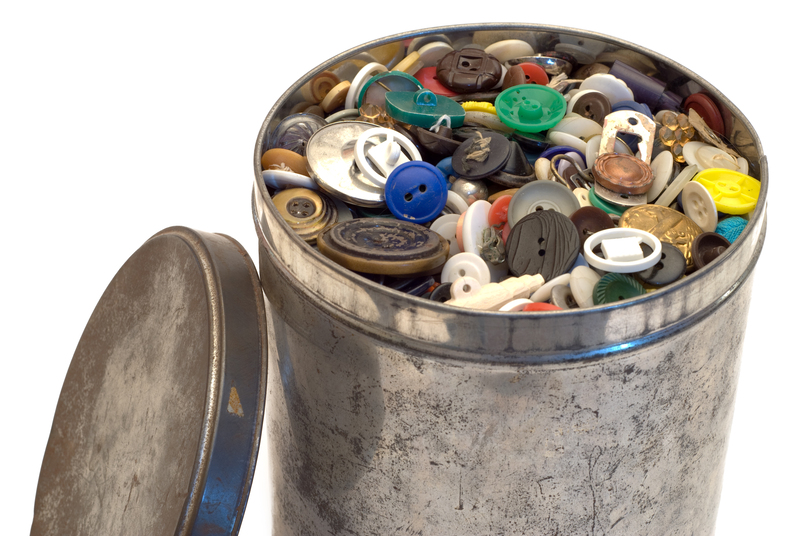Polystyrene Environmental Impact Reduction
Posted on 01/10/2025
Polystyrene Environmental Impact Reduction
Polystyrene is a synthetic aromatic polymer made from the monomer styrene, widely used in the production of disposable packaging and insulation materials. While its lightweight and insulating properties make it valuable for a variety of applications, its environmental impact has become a critical concern. From its production to disposal, polystyrene poses numerous environmental challenges, ranging from resource consumption and greenhouse gas emissions to persistent pollution. This article draws attention to the necessary strategies to mitigate its impact on the planet.
Understanding Polystyrene and Its Uses
Polystyrene can be found in two main forms: expanded polystyrene (EPS) and extruded polystyrene (XPS). EPS is widely known by its trademark Styrofoam and is used in products such as cups, food containers, and packaging peanuts. XPS, on the other hand, is used for applications requiring more structural strength, such as insulation boards. Both forms, unfortunately, contribute significantly to environmental pollution.

The Environmental Challenges of Polystyrene
Polystyrene's environmental impact begins at its production phase, which relies heavily on petrochemical processes. This stage contributes to significant consumption of non-renewable resources and emits substantial greenhouse gases. During its use phase, polystyrene products often enter ecosystems due to improper waste management, leading to soil, water, and marine pollution.
One of the paramount problems with polystyrene is its persistence in the environment. It is not biodegradable, taking hundreds to thousands of years to break down. When it does fragment, it turns into microplastics, which can have detrimental effects on wildlife and ecosystems.
Recycling: A Partial Solution
Recycling polystyrene is often cited as a potential solution to mitigate its environmental impact. However, the recycling rates for polystyrene remain notoriously low, primarily due to economic and logistical barriers. Polystyrene is bulky and lightweight, making it costly to collect, transport, and process. Furthermore, contamination of polystyrene products with food and other materials complicates the recycling process.
Nonetheless, advancements in recycling technologies are showing promise. Closed-loop recycling involves converting used polystyrene back into its original monomer, styrene, to create new polystyrene products. This method can significantly reduce the environmental footprint if adopted more broadly.
Biodegradable Alternatives
One of the most effective strategies for reducing the environmental impact of polystyrene is to replace it with biodegradable alternatives. These materials, derived from renewable sources like cornstarch, potato starch, and cellulose, break down more easily in the environment, mitigating issues related to long-term pollution and microplastics.
Biodegradable polystyrene alternatives are already in use in several industries. For example, some food packaging companies have shifted to using plant-based materials, which decompose more readily in composting conditions. Additionally, biodegradable insulation products are being developed to replace XPS in construction applications.
Government Regulations and Corporate Responsibility
Government regulations have a crucial role to play in decreasing the environmental impact of polystyrene. Bans and restrictions on the use of polystyrene products are being implemented in cities and countries worldwide. These regulations encourage the development and adoption of sustainable alternatives.
Corporate responsibility is another pivotal area. Companies have the power to drive change by innovating environmentally friendly packaging and materials. Some corporations are already committing to using recycled materials or biodegradables in their packaging processes, setting a precedent for sustainable practices.
Consumer Choices and Awareness
Consumers also play an essential role in reducing the environmental impact of polystyrene. By choosing to buy products with sustainable packaging, participating in recycling programs, and understanding the importance of waste management, individuals can contribute to the larger effort of minimizing environmental harm.
Awareness campaigns and education are key to fostering responsible consumer behavior. Communities and organizations can work together to promote the benefits of reducing, reusing, and recycling, empowering consumers to make informed decisions.

The Role of Innovation and Research
Innovation and research are crucial to addressing the challenges of polystyrene pollution. Research into new materials that can offer the same benefits as polystyrene but with a lesser environmental impact is ongoing. Some promising developments include polymers derived from biodegradable sources, which can potentially replace traditional polystyrene in various applications.
Additionally, innovations in waste management and recycling technologies are making it easier to process and repurpose polystyrene. Research institutions, in collaboration with industry partners, are pioneering methods to convert polystyrene waste into valuable products like fuel and building materials.
Conclusion
Reducing the environmental impact of polystyrene is a multi-faceted challenge that requires actions at various levels--from technological advancements and regulatory frameworks to corporate initiatives and consumer behavior. While recycling and the development of biodegradable alternatives offer promising avenues, a comprehensive approach encompassing regulation, innovation, and education is essential.
The shift towards more sustainable materials and practices is not just an environmental imperative but also an opportunity for industries and consumers to contribute to a more sustainable future. By prioritizing the reduction of polystyrene's environmental footprint, we can pave the way for healthier ecosystems and a cleaner planet.




